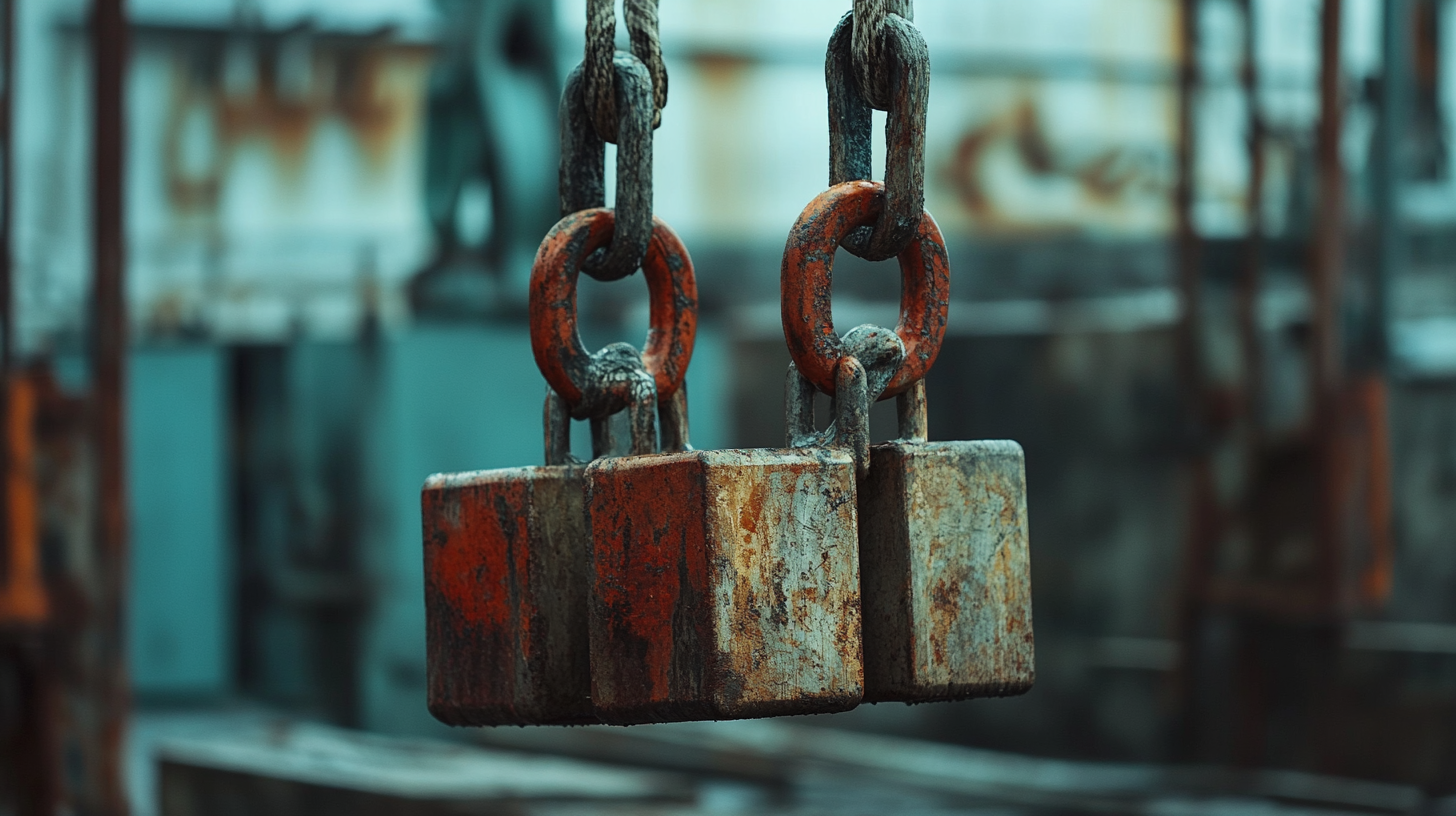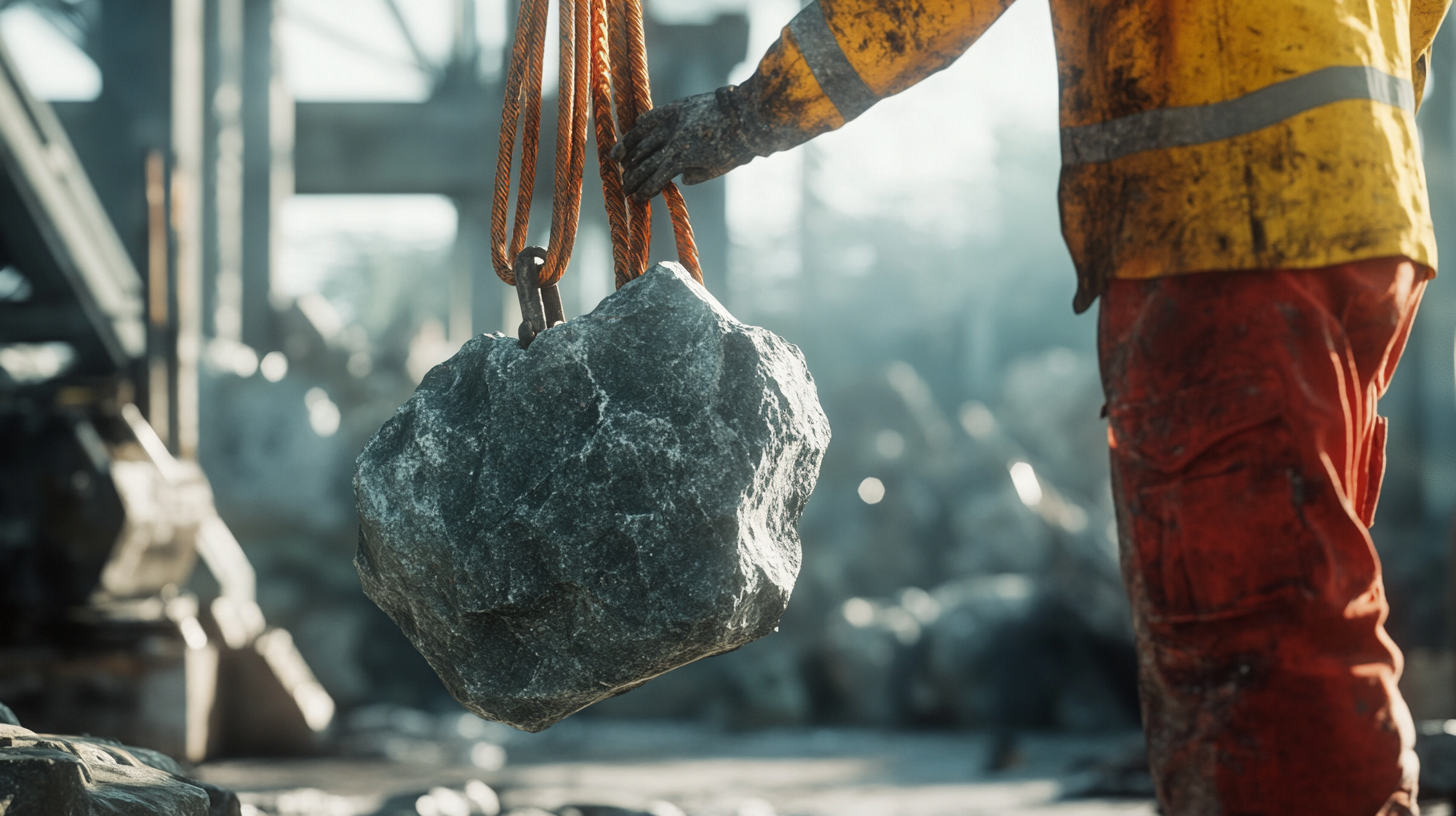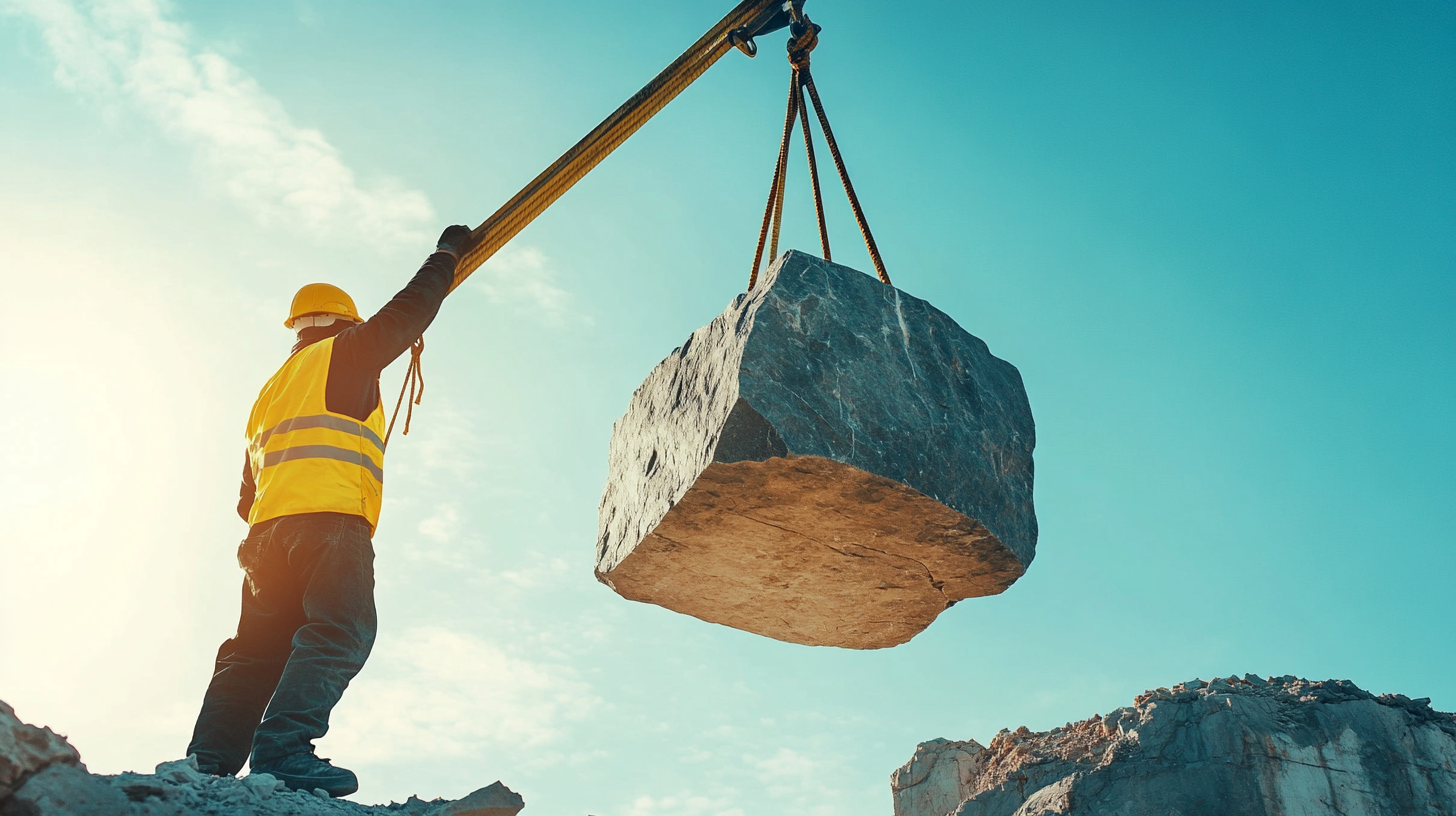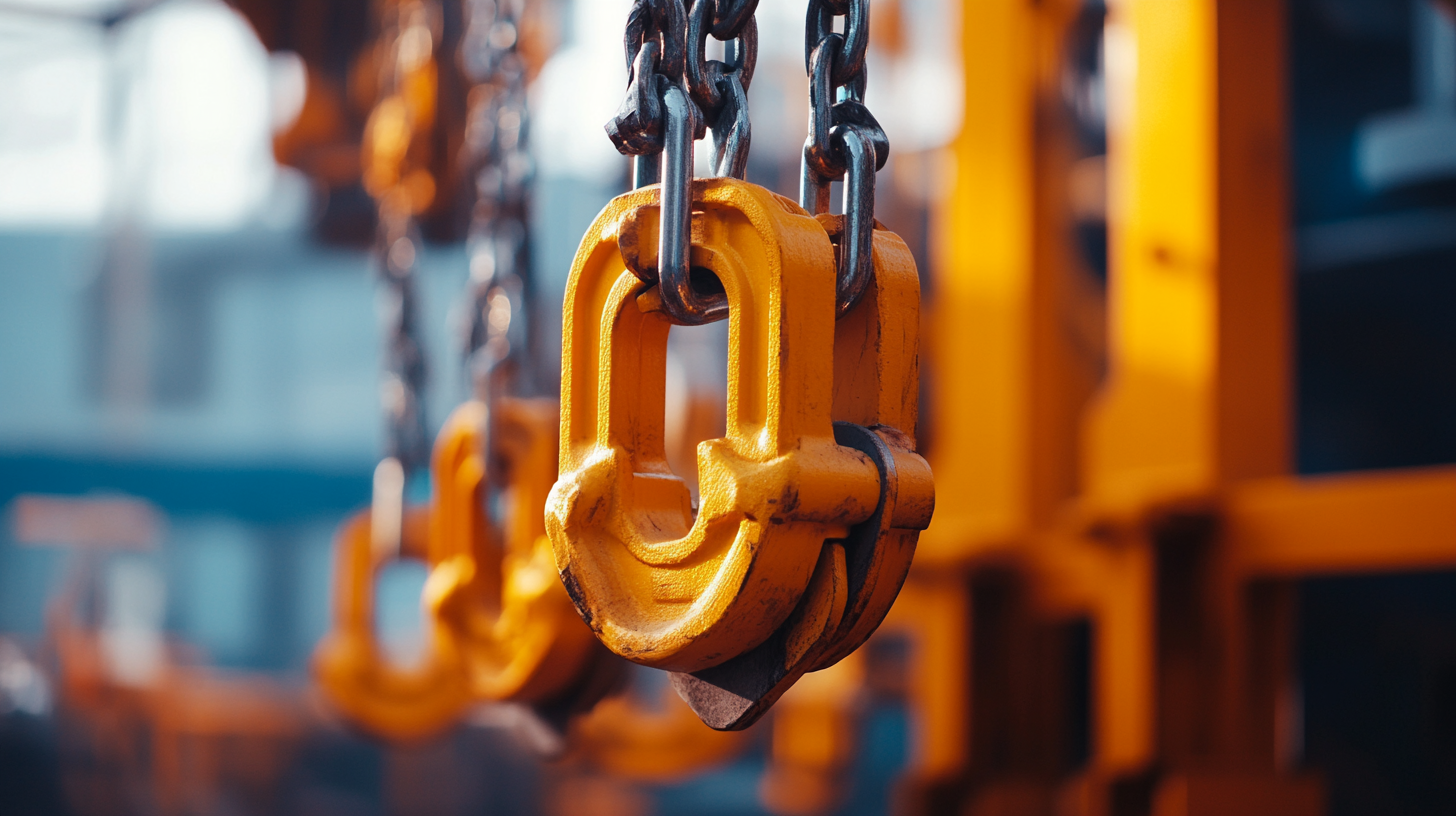The Comprehensive Handbook to Choosing the Best Stone Lifting Equipment for Your Business Needs
In the dynamic world of construction and stone masonry, the ability to move and manipulate heavy materials efficiently is paramount for success. This is where Stone Lifting Equipment comes into play, providing essential tools that enhance productivity and ensure safety on the job site. Whether you're managing a large-scale construction project or running a small stone fabrication business, selecting the right lifting equipment can significantly impact your operational efficiency and overall performance.
However, with a plethora of options available in the market, choosing the best Stone Lifting Equipment tailored to your specific needs can be a daunting task. From understanding the various types of lifting devices to evaluating their load capacities and safety features, making an informed decision is crucial. This comprehensive handbook is designed to guide you through the selection process, offering valuable insights and practical tips to help you identify the ideal stone lifting solutions that meet your business requirements.

Understanding Different Types of Stone Lifting Equipment Available on the Market
When it comes to lifting stone, understanding the different types of stone lifting equipment available is crucial for optimizing production efficiency. Various tools and machinery are designed specifically to handle the unique weight and structure of stone. From manual devices like levers and hoists to more advanced machinery such as hydraulic lifters and cranes, each type has its own set of advantages and best-use scenarios. For example, hydraulic lifters are ideal for heavy loads, providing precision and safety, while manual tools may be more suitable for smaller, less demanding tasks. Additionally, the integration of optimal materials handling equipment can significantly reduce defective product rates. By selecting the right equipment, businesses can minimize the risk of damage to both the lifting apparatus and the stone being handled. This not only enhances the overall production workflow but also results in cost savings by reducing material waste and the need for rework. Investing in quality stone lifting equipment tailored to specific tasks ensures that the handling process remains efficient and safe, ultimately contributing to a more productive work environment. Choosing the appropriate stone lifting equipment requires careful consideration of the types available and their associated benefits. Companies should assess their specific needs, including the weight and dimensions of the stones they work with and the nature of their operations. By doing so, businesses can select equipment that not only meets their lifting requirements but also aligns with their overarching goal of enhancing operational efficiency.

Key Factors to Consider When Selecting Lifting Equipment for Stone Handling
Choosing the right lifting equipment for stone handling can significantly impact your business efficiency and safety. There are several key factors to consider that go beyond just the equipment's lifting capacity. First, assess the type of stones you will be handling, as various materials require different handling techniques and equipment specifications. For instance, heavy granite blocks might need different equipment compared to lighter stones, leading to distinct operational requirements.
Another critical aspect is the environment in which the lifting operations will occur. Considerations such as outdoor versus indoor work, potential exposure to weather conditions, and the surface quality are essential when selecting equipment. Equipment designed for outdoor use may need to withstand harsher conditions, while indoor equipment might require compact designs for maneuverability in tighter spaces.
Additionally, focus on the technological features of the lifting equipment. Modern equipment often comes equipped with advanced safety features and automation that can enhance operational efficiency and minimize risks. Analyzing the costs versus the long-term benefits of investing in high-tech lifting equipment versus conventional models is crucial for making an informed decision.
Finally, working closely with suppliers to understand maintenance requirements and service support can make a substantial difference in the long-term performance and reliability of your stone lifting equipment. A well-maintained lift can increase uptime and productivity, ensuring that your business remains competitive in the growing stone processing industry.

Safety Guidelines and Best Practices for Operating Stone Lifting Equipment
Operating stone lifting equipment safely is paramount in minimizing risks and ensuring a productive work environment. According to the Occupational Safety and Health Administration (OSHA), approximately 50% of workplace injuries in the construction sector involve lifting equipment. Properly following safety guidelines can drastically reduce these incidents. Operators should receive thorough training and understand the specific capabilities and limitations of the equipment they handle, which is crucial for both their safety and the safety of those around them.
Another key aspect of safety is regular maintenance and inspection of lifting equipment. A 2023 industry report by the Construction Industry Institute emphasizes that nearly 40% of machinery accidents occur due to equipment failure, often tied to inadequate maintenance practices. Keeping a detailed log of inspections and repairs not only promotes accountability but also enhances the reliability of the equipment used.
In addition to operator training and maintenance, implementing best practices, such as establishing exclusion zones and utilizing proper lifting techniques, plays a critical role in operational safety. A survey conducted by the National Safety Council highlights that companies adopting these proactive measures reported a 30% reduction in lifting-related accidents over the last five years. Investing in safety equipment, such as harnesses and protective gear, further underscores a commitment to creating a safer workplace. By prioritizing these safety guidelines, businesses can not only improve their operational efficiency but also foster a culture of safety that benefits all employees.

Evaluating the Cost-Effectiveness of Different Stone Lifting Solutions
When selecting stone lifting equipment for your business, evaluating the cost-effectiveness of various solutions is paramount. Investing in the right tools can dramatically influence operational efficiency, safety, and the bottom line. By examining the initial costs, maintenance expenses, and potential returns, businesses can make informed decisions that align with their project needs and budget constraints.
Different types of stone lifting equipment come with varying price points, and it’s essential to look beyond just the purchase price. For instance, while a high-end hydraulic lift may require a significant upfront investment, its durability and lower maintenance requirements could lead to savings over time. Conversely, a less expensive option might save money initially but could incur higher repair costs and downtime, impacting productivity. Businesses should conduct a thorough cost analysis that includes these factors to determine the best fit.
Additionally, evaluating the versatility and efficiency of the equipment can further enhance cost-effectiveness. Equipment that can handle multiple types of tasks can reduce the need for additional investments in specialized tools. Therefore, it’s wise to consider the long-term utility of the equipment and how it can adapt to the evolving needs of the business. By taking a strategic approach to assess these elements, companies can choose stone lifting solutions that maximize their investment and support their growth.
Maintenance Tips for Ensuring Longevity of Your Stone Lifting Equipment
Proper maintenance of stone lifting equipment is essential for ensuring its longevity and optimal performance. According to a report by the Construction Equipment Association, regular maintenance can extend the lifespan of lifting equipment by up to 30%. This not only leads to cost savings but also enhances safety in operations, as equipment failure due to neglect can pose serious risks on the job site.
One key maintenance practice involves conducting thorough inspections before and after each use. The Occupational Safety and Health Administration (OSHA) recommends checking for any signs of wear or damage, particularly in the lifting cables and hydraulic systems. Keeping detailed records of these inspections can help identify recurring issues and schedule timely servicing, preventing major breakdowns.
In addition to inspections, lubricating moving parts regularly is crucial for reducing friction and wear. Research indicates that proper lubrication can reduce maintenance costs by 20% and improve efficiency. Utilizing high-quality lubricants as suggested by manufacturers ensures that equipment remains in peak condition, ultimately leading to better lifting performance and reliability.
Lastly, investing in staff training on equipment handling contributes significantly to its maintenance. A survey by the National Association of Heavy Equipment Training Schools found that 57% of equipment failures are attributed to operator error. By educating operators on best practices and proper handling techniques, businesses can lower the risk of damage and prolong the life of their stone lifting equipment.

